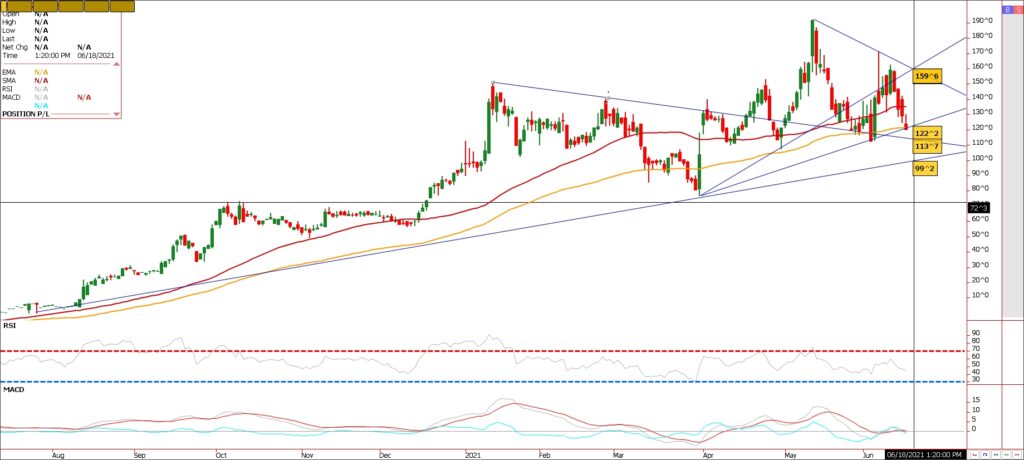Commentary
The soybean complex has been routed the last six sessions as funds have hit the sell button en masse following last week’s WASDE report in my opinion. After making a pre report high at 16.23, July beans have fallen approximately $1.80 to today’s low at 14.42, then firmed slightly to close at 14.48. That is over a 10 percent correction in about 8 trading sessions. July beans are up just over10 percent on the year so far giving back 15 percent from the Spring highs. Last weeks slight raises in ending stocks for both old and new crop beans along with disappointing monthly crush numbers have given thoughts to slight potential increases in new crop supply. However, the market should remain in a very tight ending stocks situation until next years South American Harvest. Two thoughts to ponder. One is the acreage numbers released at months end. We should get an increase in planted bean acres. But home much of an increase? Estimates range from 400K more to an increase close to 2.4 million acres. A big range but the common thinking is that any major adjustments from the March planted report will favor corn versus beans. Predicting what the USDA is going to say is a fool’s errand in my view. I think its more appropriate to trade the charts. Secondly, the drought like conditions in the northwest growing regions look to get some much needed potential relief into month end. That seems to be the projection and one of the reasons beans have retreated here. However, should the rains not show up in the areas that need them the most, I would look for the selling to dry up and for funds to rebuy the recent dip.
New crop November 21 beans have dropped $1.40 from their recent highs. That’s also approximately a ten percent drop. One of the spreads I’m watching is the Nov 21/Nov 22 beans. The spread has dropped 72 cents from its May high, with much of the loss occurring in the last 5 sessions. The funds in my view have clearly liquidated many longs amid a potential raise in acres and increased rain chances in the forecast. If the spread can hold 1.20, it may offer clues that this recent price break is all but over. On the other hand, should downside pressure continue, look for the spread to fall another 20 cents to trade down to 98 cents to 1.00, Nov 21 over. I look for volatility to continue and 5 to 10 percent swings in price to become the norm rather than the exception through growing season. Given that the key yield development time for beans is in August, they might not react as aggressively to flip flops in weather near term as corn or Spring wheat will currently in my view, However that will change when the calendar turns to July. Its my view that we will see another rally in beans at some point. The question is how much will they fall prior to that rally taking place?
Trade Ideas
Futures-N/A
Options-N/A
Risk/Reward
Futures-N/A
Options-N/A
Please join me for a free grain and livestock webinar every Thursday at 3pm Central. We discuss supply, demand, weather, and the charts. Sign Up Now

Walsh Trading, Inc. is registered as a Guaranteed Introducing Broker with the Commodity Futures Trading Commission and an NFA Member.
Futures and options trading involves substantial risk and is not suitable for all investors. Therefore, individuals should carefully consider their financial condition in deciding whether to trade. Option traders should be aware that the exercise of a long option will result in a futures position. The valuation of futures and options may fluctuate, and as a result, clients may lose more than their original investment. The information contained on this site is the opinion of the writer or was obtained from sources cited within the commentary. The impact on market prices due to seasonal or market cycles and current news events may already be reflected in market prices. PAST PERFORMANCE IS NOT NECESSARILY INDICATIVE OF FUTURE RESULTS.
All information, communications, publications, and reports, including this specific material, used and distributed by Walsh Trading, Inc. (“WTI”) shall not be construed as a solicitation for entering into a derivatives transaction. WTI does not distribute research reports, employ research analysts, or maintain a research department as defined in CFTC Regulation 1.71.
